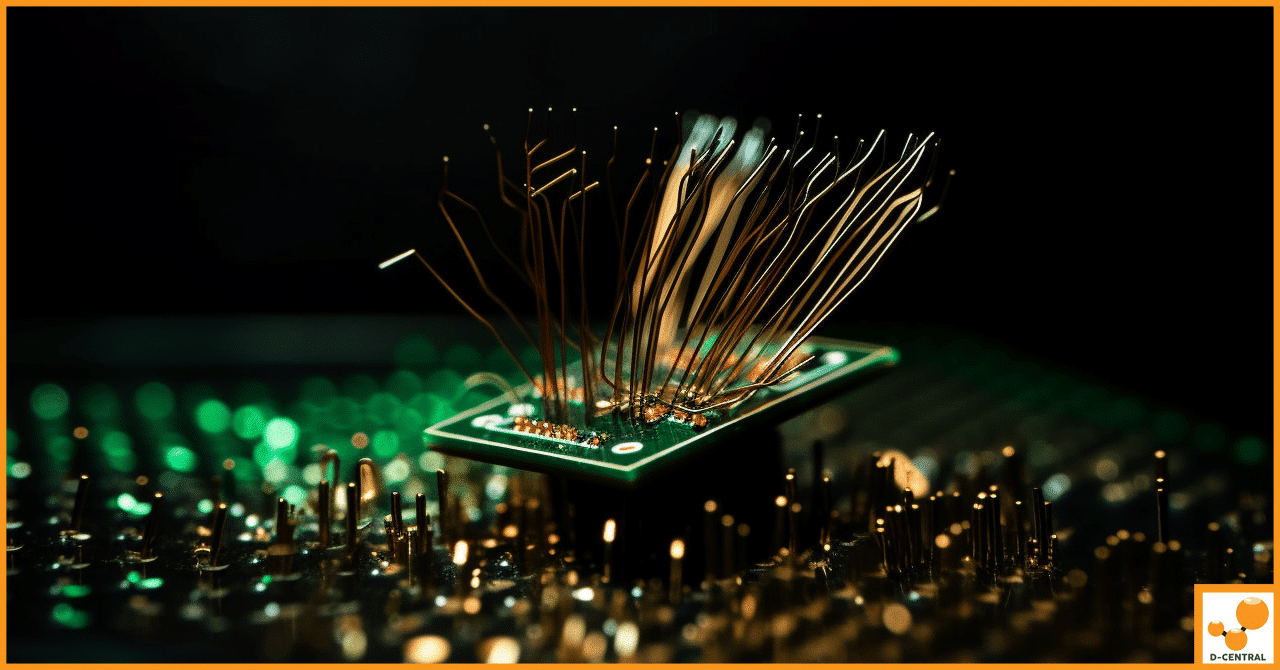
Exploring the Limits of BUSD: How It Fails to Rival Bitcoin’s Unwavering Dedication to Sovereignty
In the world of cryptocurrencies and digital currencies, there are two leading names that have captured the attention of investors,
4479 Desserte Nord Autoroute 440, Laval, QC H7P 6E2

Delaminated chips have become a widespread concern for Antminer 17 Series users, particularly those employing BM1397 chips in their Bitcoin mining operations. Delamination arises when the bond between the tin-copper alloy and the metal substrate weakens and separates, often due to electrostatic field build-up. This separation can trigger various performance issues, including thermal runaway, circuit drift, and power cycling, which can severely impact the mining hardware’s efficiency and effectiveness.
Addressing delaminated chips is essential for maintaining the optimal performance of Antminer 17 Series mining hardware. Ignoring these issues can reduce mining efficiency, overheating, and even permanent damage to the mining chips. By proactively troubleshooting and attaching tin to the glass-like passivation layer of delaminated chips, miners can safeguard their hardware’s functionality, efficiency, and long-term profitability.
The glass-like passivation layer on BM1397 chips is a thin protective material, typically consisting of an oxide or nitride, that forms on the semiconductor device’s surface. Its primary purpose is to shield the chip’s underlying layers from contaminants, moisture, and other environmental factors that could negatively impact performance. In copper-based chips like the BM1397, the most common passivation layer is a copper oxide (CuO or Cu2O), which forms when copper comes into contact with oxygen. While this passivation layer provides some level of protection, it may also impede the adhesion of tin, which is crucial for maintaining proper chip functionality.
Several factors can contribute to delamination in Antminer 17 Series chips:
By understanding the causes of delamination, miners can take preventive measures and adopt suitable troubleshooting techniques to address the issue and maintain the optimal performance of their Antminer 17 Series hardware.
Before attempting to attach the tin to the passivation layer on delaminated chips, it is crucial to ensure that the copper chips are meticulously cleaned. Removing contaminants, dust, and debris from the surface of the chips allows for a stronger bond between the tin and the passivation layer. Proper cleaning also minimizes the risk of introducing impurities that could compromise the effectiveness of the tin attachment or further damage the chips.
Utilizing a suitable solvent, such as isopropyl alcohol, is vital in the cleaning process. Isopropyl alcohol is an efficient cleaning agent capable of dissolving and eliminating various contaminants, including oils, greases, and residues from the chip surface. Moreover, it evaporates rapidly, leaving no residue that could interfere with the tin attachment process. By using an appropriate solvent like isopropyl alcohol, miners can ensure a clean surface for the tin to adhere to, enhancing the likelihood of successful attachment and prolonging the life of their Antminer 17 Series chips.
Proper preparation of the copper chips is crucial to ensuring optimal tin adhesion to the glass-like passivation layer on delaminated chips in Antminer 17 Series mining hardware. One effective technique to enhance tin adhesion is palladium chloride as an activating agent. To prepare the palladium chloride solution, dissolve a small amount in water or another suitable solvent. Next, immerse the cleaned copper chips in the prepared solution for a few minutes to activate the passivation layer on the chips. Once the immersion is complete, rinse the chips thoroughly with water and dry them completely before proceeding to the electroless tin plating process. By following these preparation steps, miners can improve the chances of a successful tin attachment process, prolonging the life of their Antminer 17 Series hardware.
Electroless tin plating is a chemical process that involves depositing a layer of tin on the activated surface of copper chips without needing an external electrical current. The process typically involves immersing the activated chips in a tin-plating solution containing tin salts and reducing agents. As the chips are immersed in the solution, the reducing agents react with the tin salts, causing the tin ions to be reduced and deposited onto the activated surface of the copper chips. This creates a thin, uniform layer of tin on the passivation layer, which helps improve chip performance and durability.
To ensure proper adhesion and coverage of tin on the passivation layer, it is essential to carefully control the plating conditions, such as solution concentration, temperature, and immersion time. The plating solution should be mixed and maintained according to the manufacturer’s instructions, and the chips should be fully immersed in the solution during the plating process. If the tin does not adhere correctly or has uneven coverage, it may compromise chip performance. After the tin plating process, rinse chips thoroughly with water to remove any residual plating solution and then dry them completely. By ensuring proper adhesion and coverage, miners can prolong their Antminer 17 Series chips’ life and maintain optimal mining performance.
D-Central’s MASIC Potion offers an effective solution for restoring the performance of Antminer 17 Series chips affected by delamination. This enhanced ASIC surface repair agent is specifically formulated for BM1396 and BM1397 series ASICs, making it an ideal choice for miners looking to maintain optimal performance and extend the lifespan of their mining hardware.
When applying the MASIC Potion, it is crucial to follow the recommended guidelines and safety protocols to avoid any short circuits or permanent chip damage. Miners should ensure that the chip surface is thoroughly cleaned and prepared before applying the repair agent. They should also use the appropriate tools and a steady hand to apply the MASIC Potion evenly and cover the entire surface.
After applying the MASIC Potion, the next step is the electroless tin plating process, which should provide reliable operation in everyday use and extreme conditions alike. However, miners should always follow proper safety precautions and consult a professional if needed to ensure the best results. By using D-Central’s MASIC Potion and following the proper techniques, miners can restore the performance of their delaminated chips and prolong the life of their mining hardware.
Another option for attaching heatsinks to delaminated chips is a conductive adhesive, such as thermal epoxy. This method requires thorough preparation and care when applying the adhesive but can provide some reliability. To use a conductive adhesive, remove any existing delaminated copper and old adhesive from the surfaces. Once both surfaces are clean and dry, apply a thin layer of thermal epoxy to the surface where the heatsink will be placed and carefully lower it into position. Allow the adhesive to dry completely for maximum efficiency, ensuring that the Antminer’s heatsink remains firmly attached despite changes in ambient temperatures or power settings.
Upgrading to all-in-one heatsinks is an effective and affordable way to improve the performance of Antminer S17+ and T17 series miners. These heatsinks are made from a one-time aluminum alloy, providing better heat dissipation than traditional copper heatsinks and old adhesive methods. The thicker heat dissipation base ensured optimal performance and reduced the risk of costly repairs due to overheating issues. Additionally, these upgraded heatsinks eliminate the risk of solder balls getting stuck on pins or glue drying out, making them a reliable solution even in extreme conditions. With their optimized airflow guide design and maintenance-free screw installation, upgrading to all-in-one heatsinks can help guarantee that your Antminer has continued working correctly for years.
To ensure the longevity and optimal performance of your Antminer 17 Series chips, it is essential to conduct regular checks on the heatsinks and chips. Inspect the heatsinks for any signs of detachment or loosening, and examine the chips for any visible damage or wear. You can promptly address potential issues and prevent further damage or performance degradation by identifying potential issues early. Regular maintenance and inspections will help prolong the life of your mining hardware and ensure its continued efficiency.
Proper installation and handling of your mining hardware play a significant role in preventing issues related to delaminated chips and loose heatsinks. When installing your Antminer 17 Series or any other mining hardware, ensure that all components are securely and correctly attached and gaps between components are filled with a strong tin bond for maximum contact. Follow the manufacturer’s guidelines for handling and installing mining hardware to minimize the risk of damage during the installation process.
Additionally, maintain a clean and dust-free environment for your mining hardware to reduce the risk of contaminants affecting performance or causing damage. By following proper installation and handling procedures, you can prevent many common issues associated with delaminated chips and ensure that your mining hardware continues to operate at peak efficiency.
In conclusion, delaminated chips are a significant concern in the Antminer 17 Series, and ignoring them can lead to detrimental effects on the performance of mining hardware. This article has explored various ways of attaching tin to the glass-like passivation layer on delaminated chips, including using palladium chloride, electroless tin plating, D-Central’s MASIC Potion, and alternative techniques such as soldering and using conductive adhesives or all-in-one heatsinks.
Regardless of the chosen method, it is crucial to follow proper precautions and use high-quality materials to guarantee the effectiveness of the solution and the safety of the mining hardware. Taking these necessary measures and implementing proper preventive maintenance practices can help prolong the efficiency and reliability of Antminer 17 Series chips.
Addressing delaminated chips and ensuring proper tin attachment to the passivation layer is an essential aspect of maintaining optimal performance and durability of mining hardware. By following the methods discussed in this article and adopting appropriate preventive measures and maintenance practices, miners can safeguard their investments and ensure the continued success of their mining operations.
1. What are delaminated chips and why are Antminer 17 Series users concerned about them?
Delaminated chips are semiconductor chips that have experienced a separation or detachment of one or more of their layers, resulting in reduced performance or failure of the chip. Antminer 17 Series is a popular line of Bitcoin mining ASIC machines with high hash rates, but recent reports indicate that some of these machines may have delaminated chips. This is a concern for Antminer 17 Series users because delaminated chips can significantly reduce the hashrate and performance of their mining machines, leading to lower profits for miners who rely on these machines for their cryptocurrency mining operations. Some users have reported losses or reductions in hashrates up to 30% due to delaminated chips. Therefore, it is recommended that Antminer 17 Series users regularly check and maintain their machines to prevent and detect any delaminated chips early on to avoid extensive damage and loss of revenue.
2. What causes delamination in Antminer 17 Series chips?
Delamination in Antminer 17 Series chips is caused by a variety of factors such as improper assembly, defective materials, and extreme temperature variations during operation. Delamination occurs when the various layers that make up the chip start separating from each other, causing a loss in electrical conductivity and rendering the chip inactive. This issue is particularly common in Antminer 17 Series chips due to their complex internal structure and the high level of stress they are subjected to during operation. To prevent delamination, it is recommended to use only high-quality and reliable hardware components, maintain proper cooling and ventilation, and avoid exposing the miners to extreme temperature fluctuations.
3. How can delamination impact the efficiency and effectiveness of mining hardware?
Delamination refers to the separation of layers in semiconductor devices, such as mining hardware. This can have a significant impact on the efficiency and effectiveness of mining hardware.
Firstly, delamination can affect the heat dissipation of the device. The separated layers can create air gaps and increase thermal resistance, making it harder for the device to dissipate heat. This can lead to overheating, which reduces the lifespan of the hardware and can cause it to malfunction.
Secondly, delamination can cause signal integrity issues in the device. The separation of layers can disrupt the flow of signals and result in errors or delays. This can impact the hash rate and overall performance of the mining hardware.
Overall, delamination can reduce the reliability, lifespan, and performance of mining hardware, ultimately decreasing its profitability for the miner. It is therefore important for mining hardware manufacturers to take steps to prevent delamination through proper design and manufacturing techniques, and for miners to regularly inspect and maintain their hardware to minimize the risk of delamination.
4. What is the passivation layer on delaminated chips?
The passivation layer on delaminated chips is a thin coating of material applied to the surface of an integrated circuit to protect it from external environmental factors like moisture, dust, and chemical contamination. In the case of delaminated chips, the passivation layer serves to reinforce the fragile bond wires that connect the chip to the package substrate. The layer is usually made of silicon dioxide or silicon nitride and can be applied through various deposition techniques like chemical vapor deposition or plasma-enhanced chemical vapor deposition. The passivation layer plays a crucial role in ensuring the longevity and reliability of integrated circuits in electronic devices.
5. How does the passivation layer protect semiconductor devices?
The passivation layer is a thin layer of insulating material that is applied on top of the semiconductor device. Its main function is to protect the device from mechanical, chemical, and environmental damage. The passivation layer helps prevent the ingress of moisture, oxygen, and other contaminants that can cause corrosion and degradation of the device. This layer also helps in preventing electrical shorts and can help reduce the effects of any noise. The passivation layer plays a crucial role in protecting the device from external stress and in improving its overall reliability and lifespan.
6. What is the most common passivation layer found in copper-based chips?
The most common passivation layer found in copper-based chips is silicon dioxide (SiO2).
7. What factors contribute to weakened bonds and eventual separation between the passivation layer and tin-copper alloy?
There are several factors that can contribute to weakened bonds and eventual separation between the passivation layer and tin-copper alloy. Some of these factors include:
Overall, it is important to take steps to minimize these factors in order to maintain the integrity of the passivation layer and prevent separation from the tin-copper alloy. This can include proper storage and handling, cleaning and preparation of the surface, and careful selection of materials and processes.
8. What measures can miners take to prevent delamination and maintain optimal performance in Antminer 17 Series hardware?
To prevent delamination and maintain optimal performance in Antminer 17 Series hardware, miners can take the following measures:
9. What is the importance of cleaning copper chips before attaching tin to the passivation layer on delaminated chips?
Cleaning copper chips before attaching tin to the passivation layer on delaminated chips is important because it ensures a strong and reliable bond between the tin and the copper substrate. Copper surfaces can become oxidized or contaminated during storage or handling, which can hinder the adhesion of the tin layer. By cleaning the copper chips, any oxide or contaminants are removed, increasing the surface energy of the copper and allowing for better wetting and adhesion of the tin layer. This results in a more stable and durable circuit connection, reducingthe risk of failures or malfunctions. Additionally, cleaning the copper chips helps to prevent any residual materials from interfering with the electrical performance of the device.
10. What are the risks of introducing impurities during the cleaning process?
Introducing impurities during the cleaning process can have various risks. Firstly, it can affect the quality of the final product, making it less effective or even harmful if the impurities are toxic. Secondly, it can also lead to contamination of the cleaning equipment and the surrounding environment, posing a risk to the health and safety of workers and consumers. Moreover, the presence of impurities can also lead to issues such as corrosion or clogging in pipes and other equipment, which can result in costly repairs and maintenance. Therefore, it is crucial to ensure proper cleaning procedures and equipment are used to minimize the risk of introducing impurities during the cleaning process.
DISCLAIMER: D-Central Technologies and its associated content, including this blog, do not serve as financial advisors or official investment advisors. The insights and opinions shared here or by any guests featured in our content are provided purely for informational and educational purposes. Such communications should not be interpreted as financial, investment, legal, tax, or any form of specific advice. We are committed to advancing the knowledge and understanding of Bitcoin and its potential impact on society. However, we urge our community to proceed with caution and informed judgment in all related endeavors.
Related Posts

In the world of cryptocurrencies and digital currencies, there are two leading names that have captured the attention of investors,

Bitcoin mining, the backbone of the cryptocurrency ecosystem, serves a dual purpose: it secures the blockchain by validating transactions and,

In the rapidly evolving landscape of Bitcoin mining, a new challenge has emerged that poses a significant threat to the